Budapest's District 7: Jewish Quarter and Ruin Bar Scene
District 7, or Erzsébetváros as locals call it, is hands down one of Budapest's most interesting neighborhoods. We're talking about a place where you can explore centuries-old Jewish history in the morning and party in world-famous ruin bars at night. This central district has had quite the journey from being bombed out during the war to becoming one of Europe's hottest nightlife destinations.
What happened here is pretty amazing when you think about it. After World War II, this area was basically left to fall apart for decades. But that decay actually set things up for something incredible. The cheap rent and crumbling buildings attracted creative types who turned abandoned spaces into the coolest bars you've ever seen. Now District 7 pulls in visitors from all over the world who want to experience something totally unique.
We always tell people that this isn't just about the famous ruin bars, though those are definitely worth the hype. You've got historic synagogues, moving memorials, incredible street art, and a creative scene that's constantly evolving. It's like nowhere else we've been.
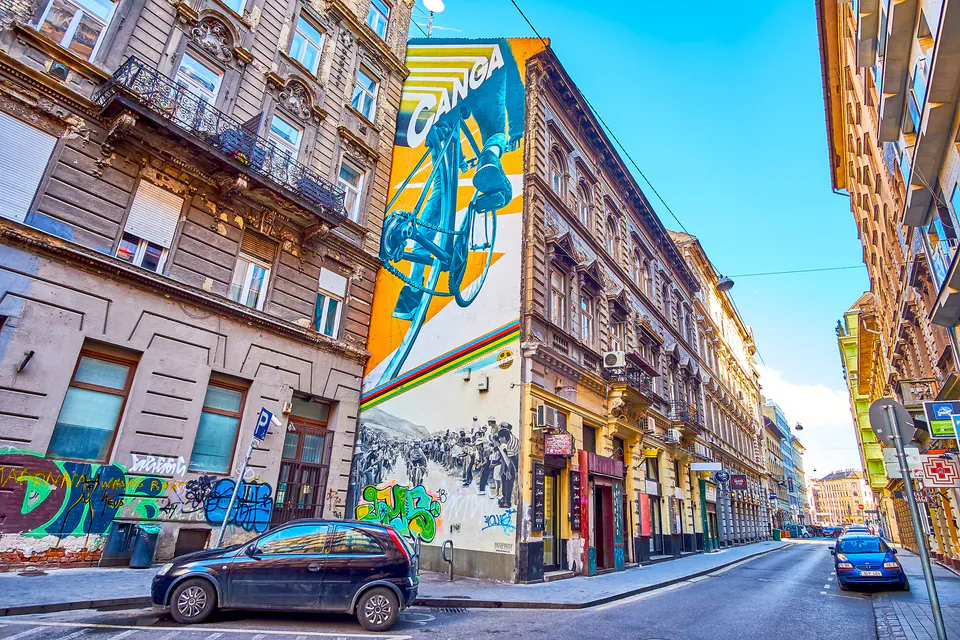
How the Jewish Quarter Started
Back in the 1700s, Emperor Joseph II changed the rules and let Jewish people become citizens and settle east of Karoly Korut. This was huge news at the time. Jewish families started moving to District 7, and pretty soon it became the center of Jewish life in Budapest.
Things really took off in the late 1800s. By 1930, about 200,000 Jewish people lived in Budapest, and most of them called District 7 home. Király utca was where everything happened - shops, community meetings, daily life. We've seen old photos of this street from back then, and it was absolutely buzzing with activity.
But then 1944 came, and everything changed in the worst possible way. When the Nazis occupied Hungary, they turned District 7 into the Budapest Ghetto on November 29, 1944. They crammed about 70,000 people into less than a square mile. Buildings that were meant for maybe 5 people suddenly had 20 crammed inside. Disease spread like crazy, people were starving, and the conditions were just horrific.
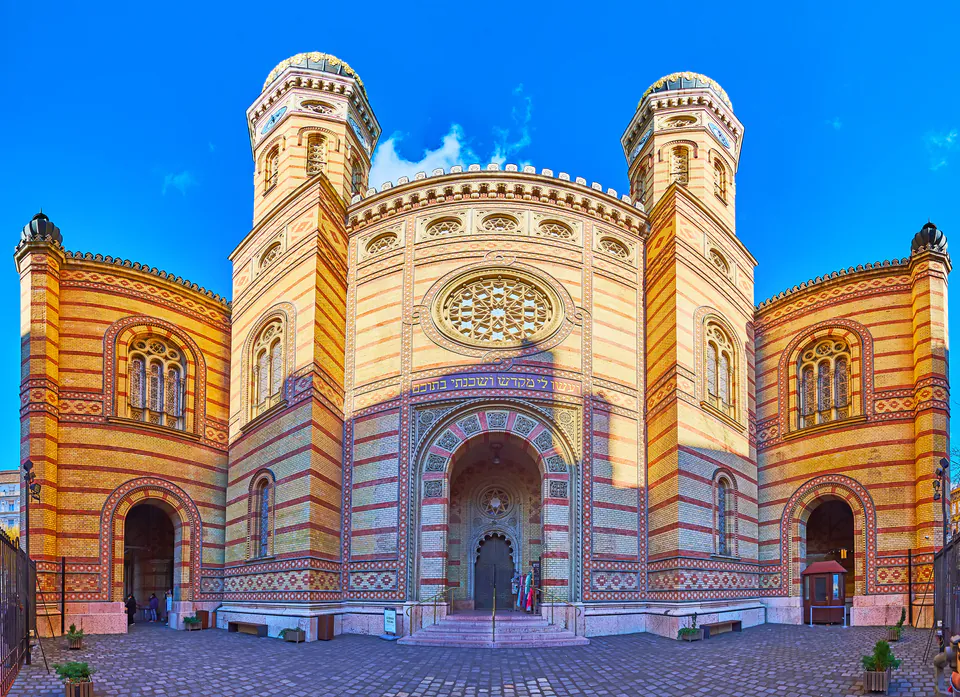
There were some real heroes during this dark time though. Raoul Wallenberg from Sweden handed out thousands of protective passports and set up safe houses. He saved somewhere between 7,000 to 9,000 lives. Carl Lutz, a Swiss guy, created refuges like the Glass House and protected about 3,000 people. The Soviet Army finally liberated the ghetto on January 17, 1945, but by then thousands had already been killed or sent to concentration camps.
How District 7 Came Back to Life
After the war and then decades under communist rule, the old Jewish Quarter was a mess. Buildings were falling down, lots of places were completely empty, and many structures were basically ready for the wrecking ball. We've talked to locals who remember how rough it looked in the 1990s.
But here's where it gets interesting. In the early 2000s, all those empty, cheap spaces started attracting artists and entrepreneurs. The big moment was when Szimpla Kert opened in 2002. These guys took a completely run-down building and turned it into this amazing bar that embraced all the decay and made it part of the charm.
That's when the whole ruin bar thing exploded. More and more people started seeing potential in these crumbling buildings. Instead of fixing them up to look new, they kept the "shabby chic" vibe and just made them functional. District 7 went from being this forgotten, bombed-out area to the coolest neighborhood in Budapest. It's pretty incredible how quickly things changed.
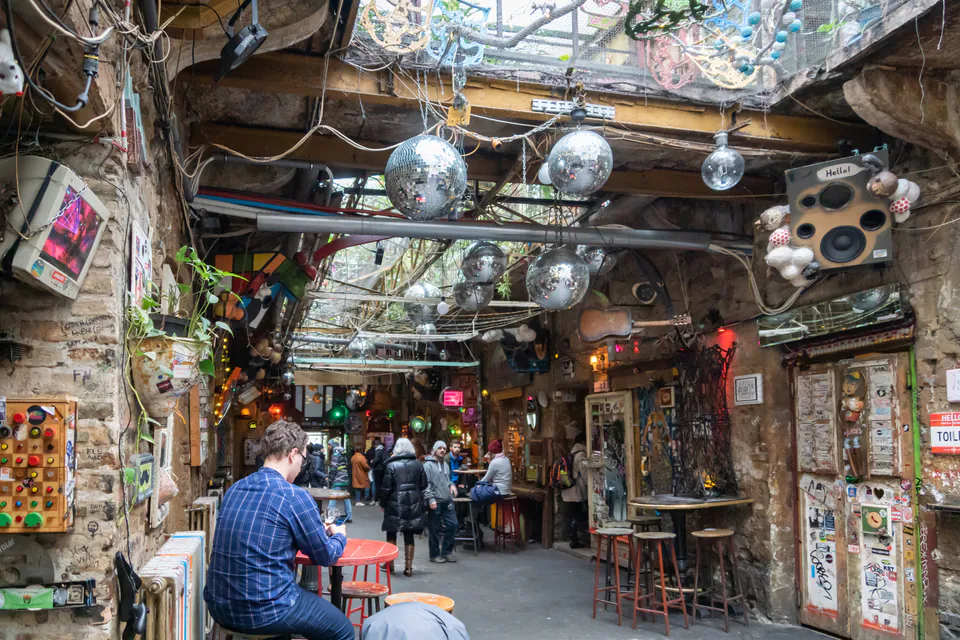
Jewish Life in District 7 Today
Even after everything that happened, District 7 is still the heart of Jewish life in Budapest. The most important Jewish institutions in Hungary are right here - synagogues, cultural centers, community buildings.
The Great Synagogue is absolutely massive. It opened in 1859 and it's the biggest synagogue in Europe, third biggest in the world. The architecture is wild - they mixed Moorish Revival with Byzantine, Romanesque, and Gothic styles. When we first walked inside, we couldn't believe how much it felt like a cathedral with all the ornate decorations and that huge organ.
The synagogue complex has several important spots. There's the Hungarian Jewish Museum and Archives, which sits where Theodor Herzl's house used to be. The Heroes' Temple honors Jewish soldiers who died in World War I. And the Raoul Wallenberg Memorial Park has this Tree of Life memorial that's really moving - it honors Holocaust victims and the people who tried to save them.

The Kazinczy Street Synagogue, finished in 1913, is probably one of the most beautiful synagogues we've ever seen. It's Art Nouveau style with tons of Hungarian folk art influences. This is where Orthodox Jewish life in Hungary is centered - they've got the city's only active mikveh, prayer rooms, and a school.
Then there's the Rumbach Street Synagogue from 1872. It used to serve the community that didn't want to pick sides between the different Jewish groups. It's got this Moorish Revival design that fits perfectly with the neighborhood. They stopped using it as a synagogue in 1959, but they've been fixing it up since 2016 and plan to turn it into a museum.
The Famous Ruin Bars
The ruin bars, or romkocsma in Hungarian, are what really put District 7 on the map for international visitors. These places started when young people with no money saw potential in buildings that everyone else thought were beyond saving.
What makes ruin bars special is how they embrace the decay instead of hiding it. They keep the crumbling walls, add mismatched furniture they found on the street, let people do graffiti, and basically make "undesigned" into a design philosophy. It creates this super relaxed vibe where everyone feels welcome - locals, tourists, students, whoever.
But these aren't just places to drink. Many of them host live music, art shows, movie nights, and markets during the day. They've become real community spaces, which is pretty cool when you think about how they started.
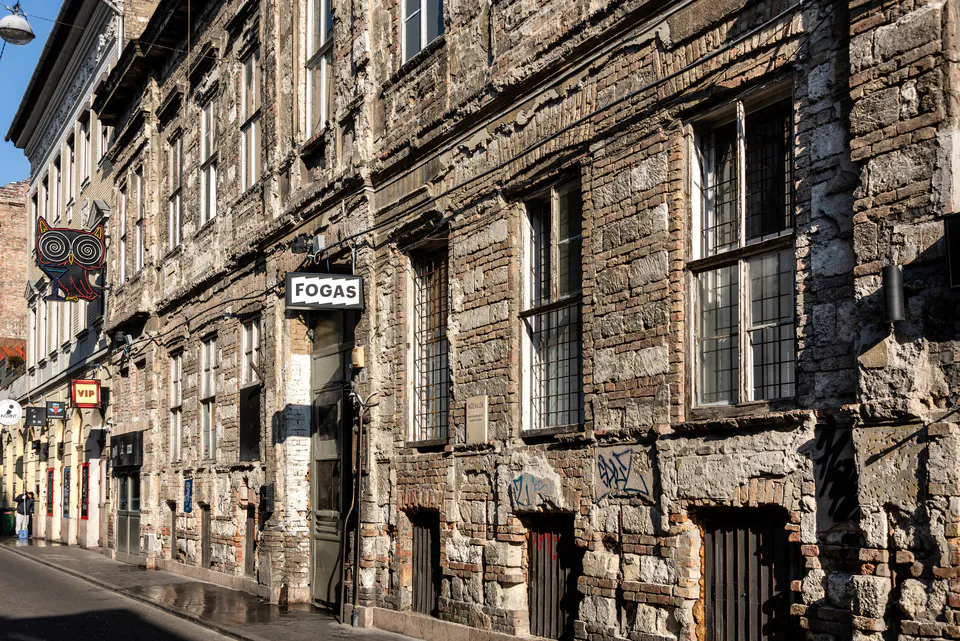
Popular Ruin Bars Operating Hours
| Venue Name | Weekday Hours | Weekend Hours | Special Features |
|---|---|---|---|
| Szimpla Kert | 3 PM - 4 AM | 12 PM - 4 AM (Sun: 9 AM) | Sunday farmers' market |
| Instant-Fogas Complex | 6 PM - 6 AM | 6 PM - 6 AM | 18 bars, 7 dance floors |
| Mazel Tov | 12 PM - 1 AM | 10 AM - 2 AM | Middle Eastern cuisine |
| Kisüzem | 12 PM - 2 AM | 12 PM - 3 AM | Craft beer focus |
Szimpla Kert is the granddaddy of them all. It's in an old stove factory and the layout is completely crazy - rooms everywhere, an outdoor garden with fairy lights, and decorations that make no sense but somehow work perfectly. They've got craft beer, cocktails, live music, movie nights, art shows, and this awesome farmers' market on Sundays that we always recommend checking out.
The Instant-Fogas Complex is what happened when two legendary venues merged in 2017. This place is huge - we're talking seven dance floors and eighteen different bars. You've got Fogas kert (the outdoor ruin pub), Liebling (cozy cafe-bar), Lärm (techno club), and Robot (alternative rock club). They stay open until 6 AM every day, which is pretty intense.
Mazel Tov is more upscale than the others, but it's still got that ruin bar feel. The Middle Eastern food here is really good, and they've done this cool thing with hanging plants and soft lighting. We always tell people to make reservations because it gets packed, especially on weekends.
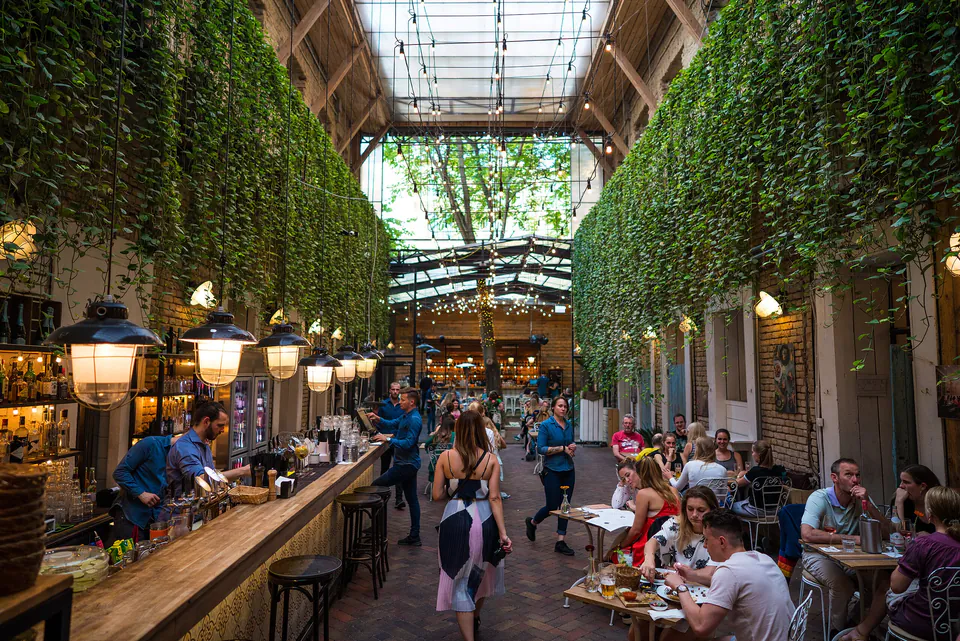
Art and Culture Spots
Gozsdu Udvar is this cool series of connected courtyards that link Király utca and Dob utca. It used to be a big trading area back in the day, but now it's packed with cafes, bars, restaurants, and shops. The whole area comes alive at night with people from all over the world hanging out and having a good time.
On weekends, they have the Gozsdu Weekend Market where you can find antiques, handmade stuff, and local food. It's a nice way to spend a Saturday morning before the nightlife kicks in.
The street art scene here is incredible. We spent hours just walking around looking at all the murals and graffiti. A lot of it is on the sides of buildings, and some pieces are massive. Rumbach Sebestyén Street has some particularly awesome murals, including this famous Rubik's Cube one that everyone takes photos with.
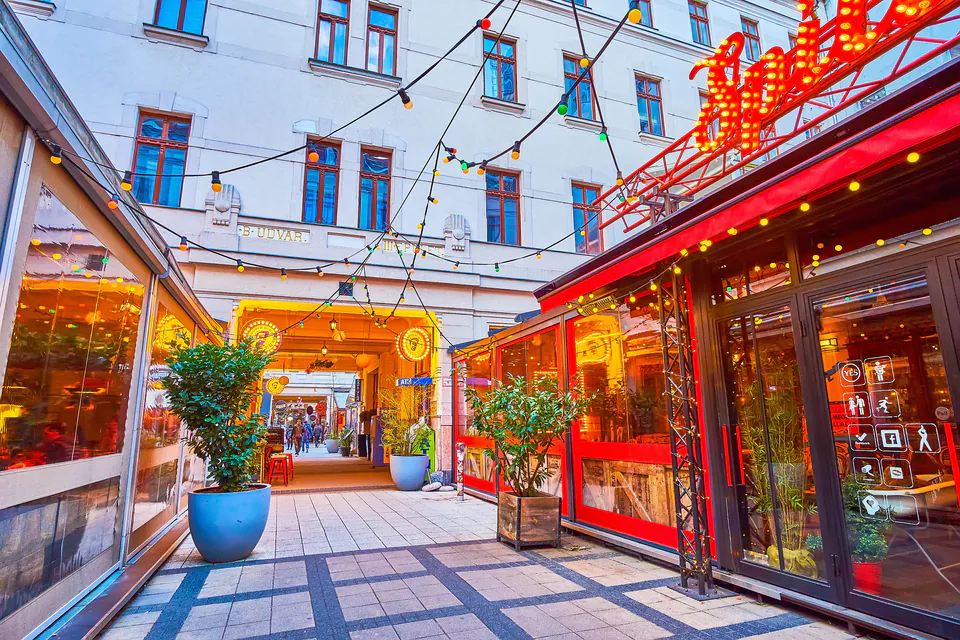
Where to Stay in District 7
You can find pretty much any type of accommodation in District 7, from fancy hotels to cheap hostels. The best part is that everything is right in the middle of all the action, so you can walk to most places you'll want to visit.
The luxury hotels here are really nice - they've taken these beautiful old buildings and updated them with modern amenities while keeping the historical character. We stayed in one during our last visit and loved being able to walk to the ruin bars in just a few minutes.
The mid-range places are great too, especially the boutique hotels that really embrace the neighborhood's creative vibe. Some of them have designed their common areas to look like mini ruin bars, which is pretty fun.
For budget travelers, there are tons of hostels that cater to the party crowd. Many of them organize pub crawls and other social activities, so they're good places to meet people if you're traveling solo. We've heard from lots of young travelers who made lifelong friends at these hostels.
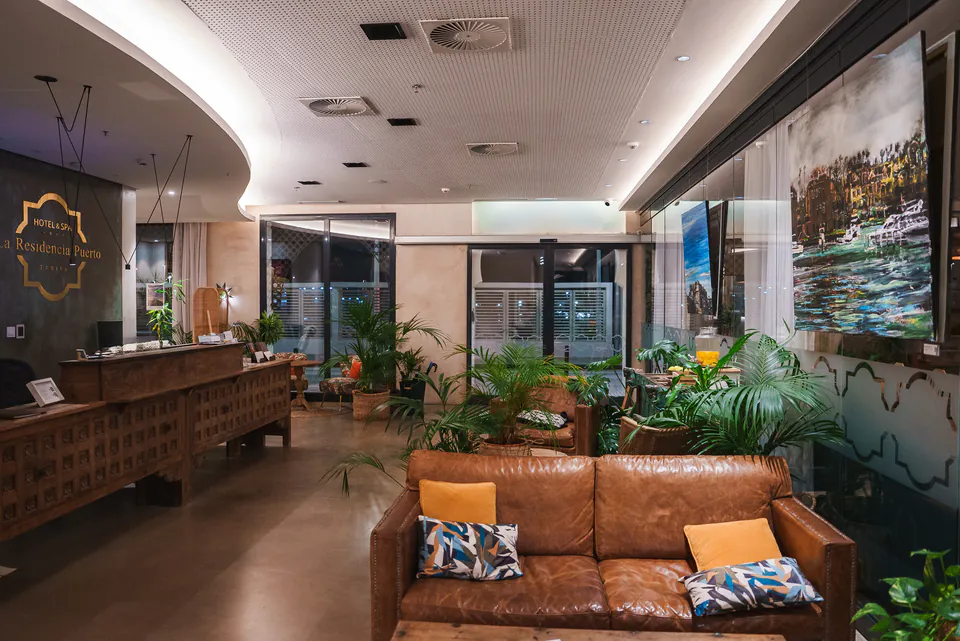
Food Scene
The food in District 7 reflects all the different cultures that have called this place home. You've got traditional Hungarian restaurants serving the classics alongside newer places that mix local ingredients with international flavors.
Jewish food traditions are still strong here. There are kosher restaurants and bakeries that serve the local community and curious visitors. We tried some traditional dishes that have been part of this neighborhood for hundreds of years, and they were incredible.
A lot of the ruin bars have really stepped up their food game too. You can get everything from Hungarian comfort food to fusion cuisine, often served in those atmospheric courtyards that make everything taste better.
Street food is everywhere, especially around the nightlife areas. Food trucks and casual vendors serve quick, cheap meals that hit the spot when you're bar hopping. We discovered some of our favorite late-night snacks this way.

Getting Around
District 7 is super central, so getting there is easy with Budapest's public transport. Multiple metro lines serve the area, and there are stations within walking distance of pretty much everything you'll want to see.
Honestly, walking is the best way to explore District 7. Everything is pretty close together, so you can easily hit the synagogues during the day and then bar hop at night without needing any transport.
Biking has gotten a lot better here in recent years. They've added bike lanes and you can use the bike-sharing programs to get around the district and connect to other parts of Budapest.
For late nights when you don't feel like walking back to your hotel in another district, taxis and ride-sharing apps work great. We always use the apps rather than hailing cabs on the street - it's safer and you know the price upfront.
Safety Tips and Practical Stuff
District 7 is generally pretty safe. There's a police station right in the area and cops patrol regularly, especially around the popular nightlife spots. With so many people around, there's always someone watching.
Just use common sense like you would in any city. Keep an eye on your stuff in crowded places and watch out for the usual tourist scams like bars trying to overcharge you. We always check menus and bills carefully, especially in the more touristy spots.
When you're out partying, stick with your group and don't leave drinks unattended. We learned this the hard way during our first visit when someone tried to add extra drinks to our bill. Use reputable taxi services or ride apps instead of random street cabs, especially late at night.
The drinking age in Hungary is 18, and tipping is expected in bars and restaurants. We usually round up the bill or leave 10-15% for good service. In cocktail bars or when you get table service, definitely tip - the staff work hard and appreciate it.